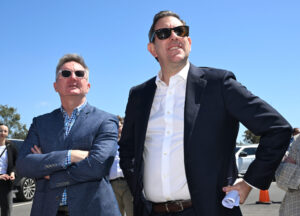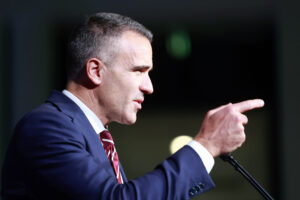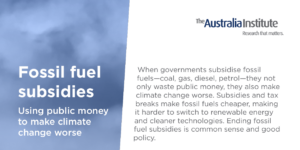Forget everything you have heard – Australia does not have a gas shortage
Australia exports around 35 times more gas than would be needed to cover any potential “shortage” in South-East Australia. Australia does not need more gas
One of the most regular and biggest scare campaigns Australians are subjected to is that Australia is about to run out of gas – that households will not be able to run heaters in winter or the light will go out in summer and the air conditioners will stop working because there will be no gas to power the electricity.
These warnings are increasingly shrill. In March for example The Australian newspaper warned that “Urgent action needed if Australia is to avoid catastrophic gas shortfall”. Despite getting through winter without a catastrophe this morning The Australian newspaper is now warning, that a “Perfect storm’ warning” has been issued to Australia’s east coast energy market.
It is all balderdash.
Australia digs up and exports a lot of gas. A really, really large amount. How much? Try 82,000,000 tonnes of the stuff each year. That is the 2nd largest amount of LNG production in the world, suggesting we are pretty good at it. But all that gas ends up as global greenhouse gas emissions and we’re meant to be reducing emissions.
If you are now wondering how we can be the world’s 2nd biggest producer of LNG and yet apparently still be short of gas, the key is to remember that all that LNG goes overseas. Australia exports around 75% of the gas that is mined on our land and in our coastal areas, and another 7% of all of Australia’s gas is used to convert gas to LNG. That adds up to 82% of our gas. For comparison, Australian households use 2.6% per cent of all the gas produced in Australia.
This is why when you hear about the shortage of gas you need to realise that the regulator, AEMO, and the gas industry and its advocates are talking about two different things. AEMO is talking about a shortage of gas in the South-East of Australia (NSW, VIC, SA, TAS); the gas companies and their advocates are talking about a shortage of gas for their LNG facilities to be exported overseas.
What is crucial is that everyone, including the gas industry, expects the global demand for gas to fall over the next 30 years. The government’s own Future Gas Strategy projects the demand for gas to fall. The reason is of course climate change. Gas is a fossil fuel that is causing a catastrophic warming of the planet and as the world moves to reduce emissions the demand for LNG and gas will fall.
This alone makes it clear we do not need more gas.
But when we look at the figures it is clear the gas shortage a fake shortage brought about by gas companies wanting to sell more gas overseas rather than to Australians.
And just how big is this “shortage”? The maximum shortage that AEMO says might happen in the South-East of Australia sometime in the mid-2030s is around 3MT with an average annual shortage throughout the decade of 2.3MT. Two point three mega tonnes sounds like a lot until you remember that Australia currently exports around 82 mega tonnes each year. That is around 35 times more than the so-called “shortage”.
The reality is Australis is flooded with gas and only a tiny bit of the gas for LNG needs to re-allocated to close any possible future gap that affects Australian gas users.
The last thing that is needed is more gas. The pro-gas advocates may shout loudly that it is too complicated to reallocate LNG gas to local users, but the policy tools are already in place to make it happen. The pro-gas advocates are just concerned about the profits of their LNG facilities rather than the welfare of Australians.
More gas will only serve to generate more profits for foreign gas companies who have no interest in serving the Australian market, and who have no care about reducing emissions in order to limit the catastrophic affects of climate change.
Australia does not need more gas, and neither does the planet.
Related research
Between the Lines Newsletter
The biggest stories and the best analysis from the team at the Australia Institute, delivered to your inbox every fortnight.
You might also like
The great gas rip off: how the government can stop us all getting burned
The Albanese government could soon intervene to start fixing one of the biggest ongoing public policy fiascos in this country’s history: Australia’s rampant, uncontrolled gas export industry.
SA Premier spreads gas industry misinformation
South Australian Premier Peter Malinauskas has told an event sponsored by the gas lobby that a new gas project in Narrabri, NSW, is needed to firm up his state’s electricity supply.
Fossil fuel subsidies
When governments subsidise fossil fuels—coal, gas, diesel, petrol—they not only waste public money, they also make climate change worse. Subsidies and tax breaks make fossil fuels cheaper, making it harder to switch to renewable energy and cleaner technologies. Ending fossil fuel subsidies is common sense and good policy.



